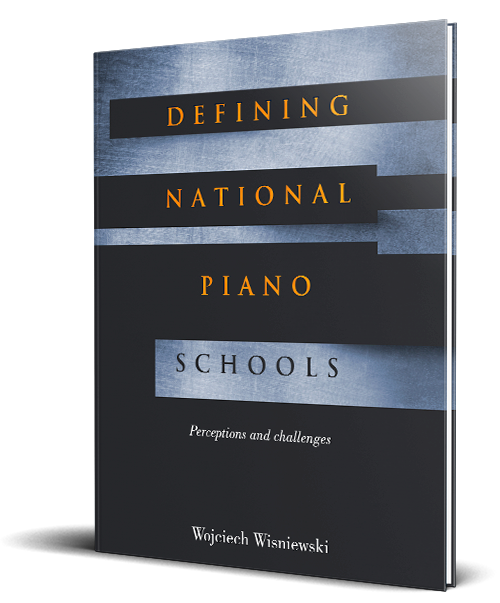Defining National Piano Schools
PERCEPTIONS AND CHALLENGES
Have you ever wondered what is happening with ‘national piano schools’ in the 21st century?
Have you thought about what makes a particular school (e.g. Russian piano school) unique? In fact, are there any unique national piano schools extant in the 21st century?
One of the most recent books describing national piano styles, commonly referred to as ‘schools’, is now available.
Professional pianists share their thoughts on Russian, French and German styles of playing in the context of detailed interviews. The international dimension of the book is assured by the publication of results from an internet questionnaire targeting piano professionals worldwide. These experienced performers and pedagogues share their opinions and discuss a variety of factors helpful in understanding the various national piano styles.
Information included in the book will serve as an inspiration to a variety of performance styles.
If you are a performer, student or an academic researcher, then this book is for you. Get your copy now!
This book is the result of a six-year investigation into the phenomenon of ‘national piano schools’ with a particular focus on establishing a definition of it. The book describes the current state of national schools and their evolution – particularly in the twentieth and twenty-first centuries. From references in topic related literature to Russian, Austro-German and French piano schools, as well as other less well documented ones, the author identifies key areas through which they may be defined. The book describes current perceptions of national piano schools, collected through interviews with contemporary piano professionals and an internationally distributed questionnaire. To add another dimension to the topic, the author explores issues related to teacher-student lineages across the ages as one of the supposedly main carriers of piano tradition. As a result, this book proposes a definition of a national piano school in terms of three broad areas: national characteristics, traditions of interpretation, and individual personality. The descriptions derived from the literature, interviews and questionnaire data resulted in various national piano schools (most notably Russian, French, German and American) being identifiable in such areas as: history, political circumstances, cultural and compositional heritage, language, conditioning, instrument type, key archetypes, generalized personality traits, technique, sound, aesthetics, phrasing, repertoire and individual personality. The changes in national schools are summarized as conforming to a trend towards unification and homogeneity, and the author presents a case that currently their unique character is much less pronounced, in some cases, as suggested by the data, to the extent of complete extinction. A nice addition to this book is the inclusion of the author’s custom designed ‘genealogical trees of pianism’, presented here, in full, in Appendix A. This publication is a near-verbatim reproduction of the author’s doctoral research of the same title. The decision to publish in book form was driven by the goal of introducing this academic research to a wider audience, and ensuring that the work invested in this study would foster further discussion.


